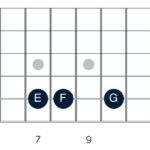For enthusiasts of nylon-string guitars, the quest for the perfect instrument often leads down intriguing paths. Among these paths, the allure of multi-string classical guitars, particularly those from brands like Ibanez, has captivated players seeking expanded tonal ranges. It’s a sentiment echoed in online forums where guitarists reminisce about a time when budget-friendly multi-string classical guitars were more readily available. The question arises: what happened to these instruments, and specifically, why did Ibanez, a brand synonymous with innovation, seemingly step away from this niche?
The Praised Qualities of Ibanez Classical Guitars
The discussion often circles back to the inherent quality found in Ibanez Classical Guitars, especially the now-discontinued 7 and 8-string models. Owners frequently highlight their exceptional sound, build quality, and playability, often exceeding that of instruments in much higher price brackets. These guitars were lauded for their:
Exceptional Sound Quality
Ibanez classical guitars were celebrated for their bright, clear trebles and resonant, deep basses. They possessed a remarkable projection and power, capable of filling a room with sound, yet also nuanced enough to produce subtle and diverse tones. The use of quality spruce tops, sometimes featuring the sought-after bearclaw pattern, contributed to their vibrant sonic character.
Superior Craftsmanship and Design
Beyond sound, the construction details pointed to a level of craftsmanship often associated with more expensive instruments. Features like thin, high-quality lacquer finishes, meticulously selected laminated mahogany backs and sides, and refined purfling showcased attention to detail. Many argue that laminated mahogany, when carefully chosen, can even surpass solid mahogany in tonal quality for classical guitar backs and sides. The necks were particularly praised for being flat, comfortable, and wide enough for traditional classical playing techniques. The body design, often incorporating a deeper profile to compensate for the cutaway, further enhanced the guitar’s resonance.
The Elusive 8-String and Market Disappearance
The desire for an 8-string Ibanez classical guitar highlights the core issue: their scarcity. While 7-string models were obtainable for a brief period, the 8-string version was even rarer, seemingly almost mythical. The frustration is palpable among players, particularly those venturing into Baroque music and requiring the extended bass range offered by an 8-string instrument. The online marketplace reflects this scarcity, with listings for these models long expired, leaving enthusiasts with few options. The disappearance of these budget-friendly multi-string options from major manufacturers like Ibanez leaves a void in the market.
Exploring Alternatives and the Second-Hand Market
While other brands like Ortega offer multi-string classical guitars, some players feel they don’t quite match the lauded quality and value proposition of the discontinued Ibanez models. This has naturally driven interest towards the second-hand market. It’s speculated that these Ibanez guitars, once considered budget instruments, may now command higher prices in the used market due to their rarity and recognized quality. For those seeking an Ibanez multi-string classical guitar, the second-hand market, though challenging, might be the only avenue left to explore.
In conclusion, the story of Ibanez multi-string classical guitars is one of appreciation and lament. These instruments, praised for their exceptional quality and affordability, have seemingly vanished from production, leaving a gap in the market and driving up demand in the second-hand sphere. For players seeking the unique voice of a multi-string nylon-string guitar, the legacy of Ibanez serves as a reminder of what was once available and perhaps, a call for their return.

